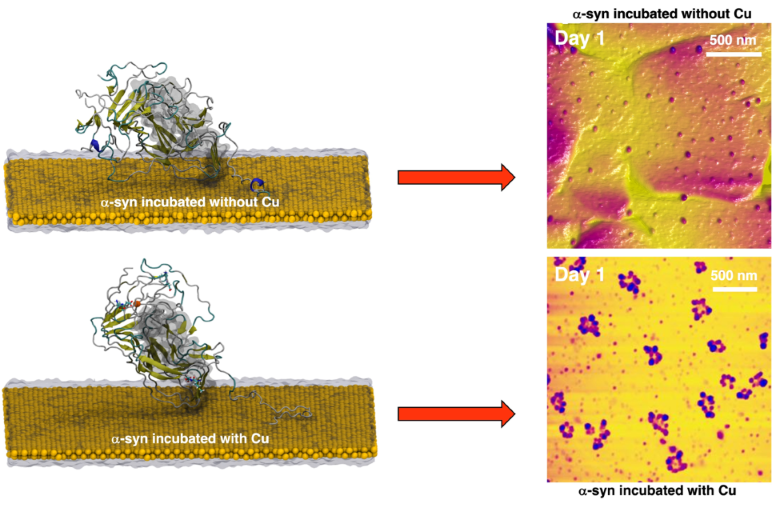4. Metallomics
Topical lead: Dr. Peter Nirmalraj
The onset of Parkinson’s disease (PD) occurs several years before the early symptoms of neurodegeneration become visible, and it is estimated that at least ten million people worldwide currently live with PD. Genetic and environmental factors are majorly responsible for familial (inherited) and sporadic (caused by random gene-environment interactions) forms of PDs, respectively. Excessive exposure to environmental biological metals such as iron, copper, and manganese may trigger or hasten PD. Abnormal aggregation of the intrinsically disordered protein (IDP) α-Synuclein (α-Syn, a 140-residue long neuronal protein) into amyloid fibrils precipitates the formation of intracellular inclusions termed Lewy bodies and Lewy neurites, which are the histopathological hallmarks of PD.
At Empa we combine nanoscale imaging and chemical spectroscopy techniques to systematically study the effect of heavy metals on proteins implicated in PD and related pathologies.

As part of this research activity, we also study the effects of other materials on the aggregation pathway of PD proteins such as pesticides (rotenone, paraquat, and dieldrin, which are present in commonly used pesticides and fungicides). The findings from these studies can serve to identify molecular targets (specific α-Syn polymorphs) for therapeutic intervention to treat PD.
